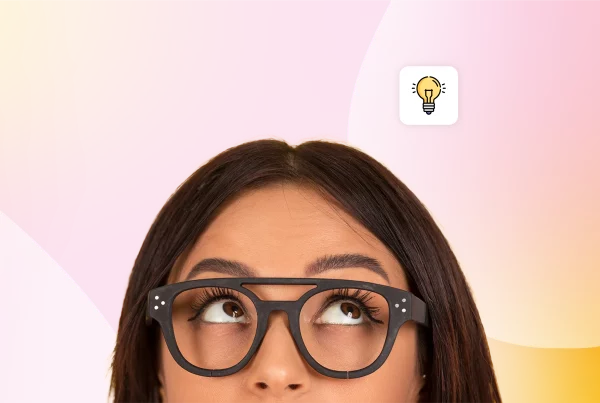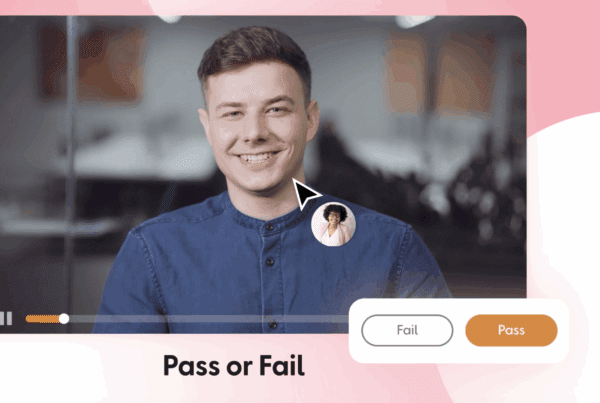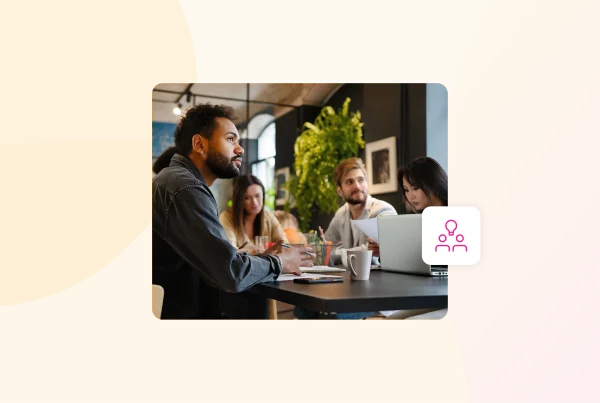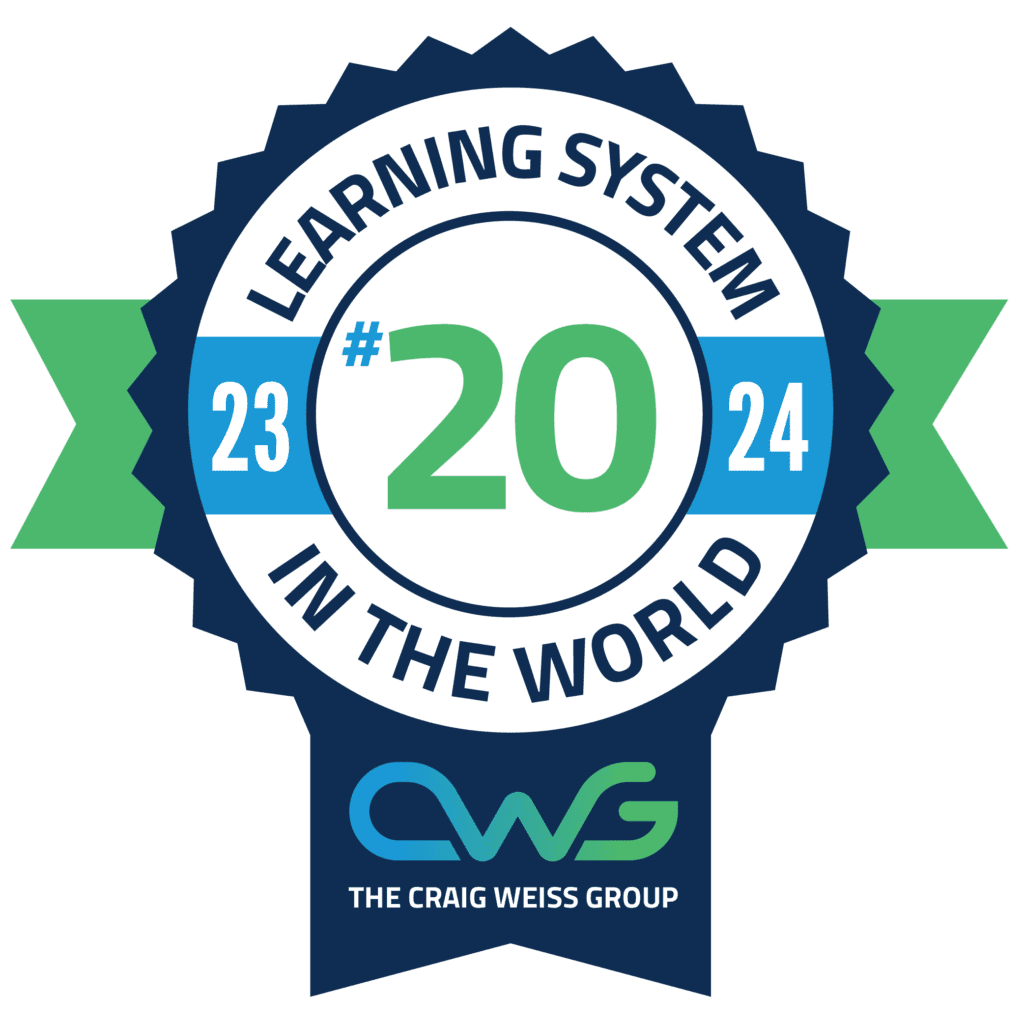Optimising L&D within an organisation is paramount to achieving sustained success.
Show us a successful organisation that ISN’T progressive and that DOESN’T foster collaborative, continual learning to drive operational performance. That’s AGAINST adopting a business-wide L&D ethos…and is still an industry leader.
There isn’t one. It’s really that simple.
If you want your business to remain competitive and meet the needs of your existing customers while attracting new ones, it needs to be continually fine-tuned to meet this goal.
But what does it actually mean?
Well, let’s start from the ground up. Implementing the right L&D theory is a good start.
The right L&D theory?
For many businesses, it’s social learning.
Interested in learning more about social learning and why it’s so important? Thirst has got you covered, keep reading below to learn the answers to these questions and so much more… 👇 👇
Definition of social learning
More and more organisations are turning to social learning to deliver customer, partner, and employee e-learning experiences. And why wouldn’t they, especially given the profound success of social learning?
But what exactly is social learning? It’s the theory that new behaviours can be learned by observing and copying others. That the only true way to learn new things is to place someone in a social environment, and whether by watching others or being told what to do, they acquire new skills.
So, let’s look at young children. Early childcare specialists, parents, or just about anyone who has ever observed children will tell you that they learn by watching what their parents or peers do and repeating it.
Regularly rewarding correct behaviour and children (and people, in general) while punishing incorrect behaviour results in persistent learning. From as young as 12-months-old, children learn how to complete tasks, like picking up crayons and colouring pictures, by observing and modelling their behaviour on those around them. 🤗 🤗
This is social learning. In many cases, it’s subconscious behavioural adjustments we make in social settings to achieve a desired outcome, e.g., learning a new skill. Do this, and you’ll give people the best possible opportunity to be successful from the get-go!
However, social learning doesn’t simply halt in children. It transcends our entire lives and is especially potent in workplace L&D environments.
Why is social learning theory important?
In traditional (non-social) learning environments, most people recall only 10% of the information they’ve been taught after 72 hours. That’s a staggering statistic.
Now consider the impact this can have on your workplace. Let’s say you’ve invested tens of thousands in L&D. But you’ve elected NOT to leverage social learning as part of your L&D. Let’s say you’re proposing a new sales process. The problem? By not leveraging social learning, 90% of the information you’re trying to convey could be lost.
The result?
Lost sales, and your bottom line takes a hit. 💸 💸 💸
Social learning helps organisations of all descriptions circumvent this outcome. Why? The primary goal of social learning is to drive knowledge retention.
The bottom line is that people learn by example and direct experience. They’re the best way to unlock and spread knowledge.
Still unsure?
Think about it this way: You want to learn how to use Excel formulas. Do you sit behind a laptop on your own, reading page after page about Excel formulas, or get involved with a group led by an Excel formula wizard and watch them demonstrate how it’s done.
We know which one we’d pick!
What is Bandura’s social learning theory?
The whole idea that “people learn by observing and repeating the behaviour of others and the outcomes they achieve” is nothing new. In fact, it was developed by a Canadian American psychologist, Albert Bandura, in 1977.
The theory is very much rooted in the influence that environmental and cognitive factors have on learning success and personal behaviour. It’s how the reciprocal interaction between cognitive and behavioural aspects.
Bandura sought to understand if simple reinforcement was enough to influence learning or if the presence of other people throughout the learning experience had an influence on the outcome.
You probably won’t be surprised to discover that the latter was highly favoured.
Still unsure? Think of it this way: Consider the popularity of YouTube or Instagram. Users create and upload their own content about anything. Food. Funny videos. Their pets. Interests. Life. Their credibility is determined by audience views and comments. 🍲 🐱 🧑💼
Bandura’s Four Principles of Social Learning
Albert Bandura’s social learning theory is guided by four principles. These are as follows:
Attention: Focusing on a task is key to learning. If people believe something to be different or novel, it’s more likely to grab and hold our attention. This is reinforced in social situations.
Retention: We learn by internalising information. When we’re required to respond in a situation that’s similar to one in which we internalised information, we recall retained information.
Reproduction: When required, people can reproduce previously learned behaviour, knowledge, and skills. Responses can be improved through mental and physical rehearsal.
Motivation: People need to be motivated to do anything, and, more often than not, people are motivated by the rewards or punishments they receive from other people.
What are the five key steps of the learning process?
As you may have guessed, social learning is one of the most influential and commonly leveraged – learning theories. It should, therefore, come as little surprise that it’s proven highly effective in L&D.
Now, we’ve already alluded to the five key steps of the learning process, but in the interest of clarity, let’s look at each in greater detail.
1. Observation
In a basic sense, social learning is observational learning. One person observes another (as in children observing their parents, teachers, or peers in the colouring example above), and they replicate the behaviour.
Once the consequence of actions is observed (that picking up, holding, and moving the tip of the crayon on a piece of paper creates the desired colour), that behaviour is repeated. 👈 👈
The same is true of our workplace example: learning Excel. Colleagues observe the Excel wizard creating formulas. They record what they are doing first by observing the actions taken.
2. Copying
The next key step in Bandura’s social learning process is copying the action of the person observed to achieve the desired outcome.
In most cases, the consequences of a behaviour depend on several factors, including the action being copied, the people, the situation, and the intended result.
For a habit to become a behaviour, repeated feedback is required. Remember that excessive criticism can encourage discouragement. Be patient. Especially when people are trying to learn something challenging, like, for instance, a new workplace software solution.
3. Learning
How much people are able to remember from their learning experience is paramount to success. After all, what use is, let’s say, a 3-hour lecture if the length of people’s attention spans decreased by almost 25% from 2000 to 2015 alone?
A better solution would be to engage people in a social setting, observe people doing something, and then remember what to do. 👈 👈
4. Repeating
Repeat the skills you’ve learned, and you’ll reinforce the memory of the actions taken. Very few people can do something once and then do it forever. Think about learning to drive. The more you practice, the better you become. It’s not enough to get behind the wheel once and expect to be Lewis Hamilton.
This step is crucial to the process. Why? People learn over time.
5. Motivation
Repetition of a task wouldn’t happen without motivation. Praising and punishing play an essential role in solidifying actions. If someone’s actions don’t receive a favourable outcome and they are then chastised for their failure, they won’t exactly feel compelled to do it again.
This is the same, regardless of age. The only difference is one of temperament. 😒 😞
How to apply the social learning theory to your company
Remember, social learning isn’t necessarily all about learning in groups. It’s learning guided by the example of others. This makes it ideal for company-wide adoption.
From sharing lessons learned to creative ideas and solutions to challenges, organisations can reap the benefits of a wider range of knowledge. And remember, the more you know, the better you’ll be.
Interested in learning how you can apply social learning to your company? We’ve got you covered; check out a few suggestions below: 👇 👇 👇
Faster, streamlined onboarding
Onboarding new members of staff can be challenging. Whether online, remotely, or in-person However, leverage social learning, and people can have access to peers at any time. Guidance provided. Solutions to problems were found. And much more.
Get answers when needed
You can’t learn anything if you have questions that can’t be answered. Imagine having access to people with a huge bank of knowledge where you could find the right answers to your questions in real-time when you needed them. This is exactly what social learning delivers.
Collaboration, collaboration, collaboration
It can be a heck of a lot easier to learn something new when you’ve got the support of your peers around you. Whether in-person or online, collaboration is a great way to bolster your learning experience and encourage contributors by everyone, incentivising them with rewards.
Many organisations have their own intranet or organisational Wikipedia, which features essential information about the organisation. From HR to departmental pages or portals, it’s easy and straightforward to connect and collaborate with colleagues.
Learn at your own pace
Not everyone learns at their own pace. Social learning allows people to access essential information for review at any time, whether learning online or in-person. FAQs and forums are a great place for people to ask questions and get answers from those in the know. Leverage the expertise of those in the organisation and elevate everyone’s abilities.
Leverage social learning with Thirst
Anyone interested in bolstering organisational performance should consider adopting a social learning ethos, and Thirst can help!
Our AI-powered learning platform empowers L&D professionals to accelerate their learning culture, talent acquisition, leadership and development, and internal mobility.
What does this mean for you?
An optimised L&D experience. Interested in learning more? Book a demo today. 👍
For more e-learning insights, resources and information, discover the Thirst blog.
You may also enjoy:
The 4 Phases of a Successful Employee Onboarding Process | 7 Ways to Build a Lifelong Learning Culture that Drives Employee Growth | What Is Blended Learning?







